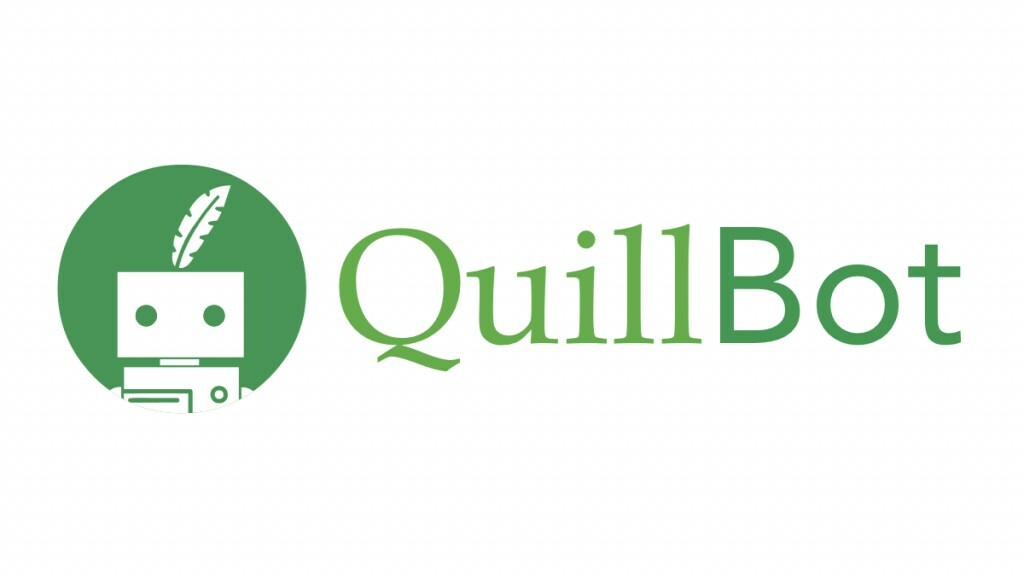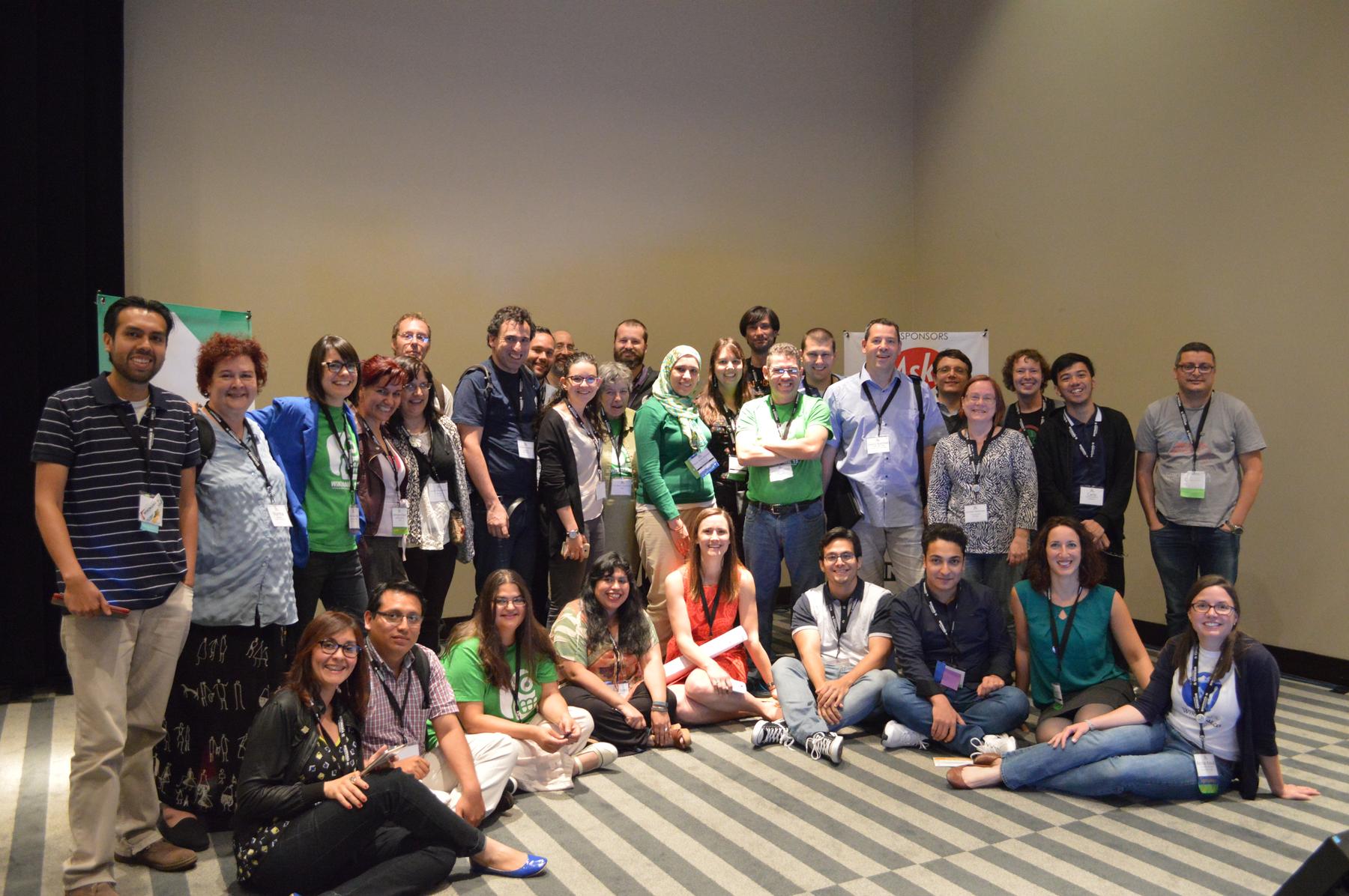Does Turnitin detect Quillbot? This is a question that students and professionals who use online writing tools often ask. Turnitin is a popular plagiarism detection tool, while Quillbot is a widely used paraphrasing tool.
In this article, we will look closer at both tools and explore whether Turnitin can detect text generated by Quillbot. We will also provide tips for using Quillbot’s paraphrasing tool to avoid detection by Turnitin’s plagiarism checker feature and discuss the importance of ethical writing practices.

Overview of Turnitin and Quillbot
Turnitin is a widely-used, web-based plagiarism detection software universities and colleges use. It uses a powerful algorithm to compare submitted papers to a vast database of academic and web sources to detect plagiarism. Turnitin’s algorithms are known for identifying even the slightest similarities between a submitted form or any ai generated text and other sources. It can also detect paraphrasing work done in student papers and mark this as plagiarized in its similarity report if the paraphrasing is not done well enough.
Quillbot, on the other hand, is an online paraphrasing tool that uses AI to generate unique and readable content from existing text. It is designed to help users save time and effort by providing quick and easy access to various paraphrasing options. Quillbot is particularly useful for those who need to quickly generate a large amount of content, such as writers, researchers, and students. It can be used on various platforms, such as MS Word, google docs, and many more.

Why is Plagiarism Detection Important?
Academic and professional integrity are vital, and plagiarism detection is critical in maintaining them. Plagiarism detection software helps to ensure that work is properly attributed and original content is produced. It is challenging to identify unintentional plagiarism without using plagiarism detection software, which can result in negative consequences. Such consequences may include academic or professional penalties, loss of credibility, and reputational damage. Therefore, it is essential to use plagiarism detection software to avoid any unintended consequences.

How Turnitin Detects Plagiarism
Turnitin is a powerful plagiarism detection tool that uses an advanced algorithm to compare submitted papers against a massive database of academic and web sources. The system generates a similarity score determining how much the paper matches other sources. Turnitin identifies plagiarism in several ways, including:
Overview of Turnitin’s Algorithm
Turnitin’s algorithm is a multi-step process that involves several checks. Firstly, it looks for exact matches between the submitted paper and the sources in its database. It then checks for sentence structure, vocabulary, and writing style similarities. Finally, it looks for paraphrasing and other forms of manipulation.
Types of Plagiarism Detected by Turnitin
Turnitin can detect various types of plagiarism, including:
- Direct plagiarism: Copying text word-for-word without attribution
- Self-plagiarism: Submitting work that has been previously published without proper attribution or permission
- Paraphrasing: Rewriting existing text without proper attribution or adding original ideas
- Patchwork plagiarism: Combining multiple sources without proper attribution
Comparison to Other Plagiarism Detection Software
Turnitin is one of the most widely used plagiarism detection tools available. It stands out for its exceptional accuracy and ability to detect multiple types of plagiarism. Other plagiarism detection software, such as Grammarly and Copyscape, have unique algorithms and features. However, Turnitin’s algorithm is regarded as one of the most comprehensive and reliable in the market.

Quillbot: A Powerful Paraphrasing Tool
Quillbot is an AI-powered paraphrasing tool designed to help users generate unique and readable content from existing text. It is a popular choice for writers looking to improve their writing by suggesting synonyms, rephrasing sentences, using grammar and providing different writing styles.
Overview of Quillbot’s Features
Quillbot has several features that make it stand out from other paraphrasing tools. These include:
- Paraphrasing: Quillbot can rewrite the existing text uniquely and readably. This feature can help users avoid plagiarism while maintaining the text’s original meaning.
- Synonym Suggestions: Quillbot suggests alternative words to improve the flow and readability of the text. This feature is handy for users struggling to find the right words to convey their ideas.
- Writing Styles: Quillbot can change the tone and style of the text to match the desired audience. This feature can help users adapt their writing to different contexts and purposes.
How Quillbot Generates Paraphrased Text
Quillbot uses advanced algorithms to analyze the input text and suggest alternative words and phrases to create a unique and readable version of the original text. The resulting text often differs from the original but retains the same meaning. This process can help users generate original content while avoiding plagiarism.
How Quillbot Compares to Other Paraphrasing Tools
While other tools, such as Spinbot and Article Rewriter, also use AI to generate paraphrased text, Quillbot’s ability to suggest synonyms and writing styles sets it apart from other tools. This feature can help users generate high-quality, unique, readable content.

Can Turnitin Detect Text Generated by Quillbot?
As a Quillbot user, you may wonder whether Turnitin can detect the resulting text as plagiarized. This is a common concern for those who use paraphrasing tools for writing assistance.
How Turnitin Detects Plagiarism in Paraphrased Text
Turnitin uses advanced algorithms to detect plagiarism in paraphrased text by analyzing the similarities between the submitted text and the source text. This includes looking for sentence structure, vocabulary, and writing style similarities. Furthermore, it can detect instances of paraphrasing and flag them as potential plagiarism.
However, since Turnitin has a rigorous algorithm that aims to detect plagiarism, it sometimes reports unique content as plagiarized, such as speeches given by a person in double quotation marks or direct quotation marks.
Results of Tests Conducted to Determine if Turnitin Can Detect Quillbot-Generated Text
Several tests have been conducted to determine whether Turnitin can detect Quillbot-generated text. These tests have shown that Turnitin can detect most instances of Quillbot-generated text as plagiarism. This means that if you use Quillbot to paraphrase content, it is likely that Turnitin will see it as plagiarism.
Implications for Students and Professionals Who Use Quillbot
These results highlight the importance of using Quillbot ethically and responsibly. While Quillbot can be a valuable tool for improving writing, it should not be used to avoid proper attribution or to commit plagiarism. Instead, it should be used to supplement your writing process and as a tool to improve your writing skills. When using Quillbot, keeping academic integrity in mind and always citing your sources correctly is essential.

Tips for Using Quillbot to Avoid Plagiarism Detection
To avoid detection by Turnitin and other plagiarism detection software, there are several best practices to follow when using Quillbot. These practices ensure your writing is unique, properly attributed, and ethically sound.
Best Practices for Using Quillbot to Avoid Detection by Turnitin
When using Quillbot, consider the following best practices:
- Use Quillbot to generate ideas and improve writing, not to avoid proper attribution. By focusing on using Quillbot as a tool to improve your writing, you’ll be able to generate unique content while avoiding plagiarism.
- Edit the resulting text to ensure it is unique and properly attributed. Quillbot is a powerful paraphrasing tool, but it is not perfect. Always review the resulting text to ensure it is unique and correctly attributed to the source.
- Use multiple paraphrasing tools to ensure a diverse range of results. Using multiple paraphrasing tools can help you avoid similarities in your writing that may trigger plagiarism detection software.
Other Strategies for Avoiding Plagiarism Detection
In addition to using Quillbot, consider these strategies to avoid plagiarism detection:
- Use proper citation and attribution when referencing sources. Accurately citing and attributing sources is essential to avoiding plagiarism and maintaining academic and professional integrity.
- Avoid copying and pasting text from external sources. Copying and pasting text correctly can still trigger plagiarism detection software even if you intend to attribute the source.
- Use plagiarism detection software to check your work before submitting it. Before submitting your work, use plagiarism detection software to ensure it is unique and properly attributed.
Importance of Ethical Writing Practices
It is crucial to uphold ethical writing practices and avoid plagiarism. Proper attribution and minimizing citation errors maintain academic and professional integrity and showcase the author’s knowledge and credibility. By following these best practices and strategies, you can use Quillbot to improve your writing while upholding ethical writing practices.

Impact of Turnitin and Quillbot on Academic and Professional Integrity
Academic and professional integrity are essential for maintaining the credibility and quality of scholarly work. Turnitin and Quillbot have impacted the academic and professional community positively and negatively. On the one hand, these tools have made it easier to detect plagiarism and ensure that proper attribution and citation practices are followed. They have also helped improve writing quality and reduce the likelihood of errors or misinterpretations.
However, there are concerns that these tools may be used to circumvent proper attribution and commit plagiarism. There are also concerns about the potential for these tools to create a culture of conformity and discourage original thinking and creativity. To maintain academic and professional integrity, using these tools ethically and responsibly while upholding proper citation and attribution practices is crucial.
Moreover, it is essential to understand how these tools work and how they can be used to improve writing while avoiding plagiarism. It is also vital to encourage the originality reports of thinking and creativity by using these tools as support rather than replacing critical thinking. Doing so ensures that academic and professional work is recognized and valued for originality and intellectual contribution.
Tips for Effectively Using Turnitin and Quillbot
To ensure that you use Turnitin and Quillbot effectively, consider the following tips:
- Use Turnitin to scan your work before submission. This will help you identify and correct any instances of plagiarism or improper attribution. Be sure to review and address all flagged issues.
- Use Quillbot to generate ideas and improve the flow of your writing. However, it is essential to edit the resulting text, such as checking for spelling mistakes and ensuring that it is unique and properly cited. Quillbot should not be a shortcut to avoid proper research and writing practices.
- Avoid solely relying on Quillbot or any other paraphrasing tool. Instead, try a combination of tools to ensure a diverse range of results and avoid detection by plagiarism detection software.
- Always cite your sources properly and follow the guidelines set out by your academic or professional institution. This includes appropriately formatting citations and references and including any necessary attributions in your writing.
By following these tips, you can use Turnitin and Quillbot to improve your writing, avoid plagiarism, and maintain academic and professional integrity.

Turnitin and Quillbot Comparison
Turnitin and Quillbot are two distinct tools that have different purposes. However, they can be compared based on their features and effectiveness.
Key Differences Between the Two Tools
Turnitin is a plagiarism detection software that compares submitted papers to a vast database of sources to detect plagiarism. On the other hand, Quillbot is an AI-powered paraphrasing tool that generates unique and readable content from existing text.
Advantages and Disadvantages of Each Tool
Turnitin’s strength lies in its accuracy and ability to detect multiple types of plagiarism. It is a popular choice for educators and professionals who must ensure their student work’s originality. Quillbot, on the other hand, is a valuable tool for improving writing as it provides suggestions for synonyms and writing styles. However, both devices have limitations and should be used ethically and responsibly.
Which Tool is Best for Specific Use Cases
The choice of tool between Turnitin and Quillbot depends on the user’s specific use case and needs. For example, Turnitin is best for detecting plagiarism in academic and professional settings. In contrast, Quillbot is best for improving writing and generating unique content. Therefore, evaluating the user’s needs is essential to make an informed choice between the two tools.
Conclusion
After exploring the features and capabilities of Turnitin and Quillbot, it is clear that both tools offer significant value in plagiarism detection and paraphrasing. However, it is essential to use these tools ethically and responsibly. Proper citation and attribution practices are crucial to maintaining academic and professional integrity.
By following the best practices and insider tips provided in this article, users of these tools can be confident that their work is original, credible, and valued. It is essential to remember that these tools are meant to be used as aids to improve writing and not as a substitute for careful research and thoughtful writing.
In conclusion, Turnitin and Quillbot are valuable additions to the online writing tools space, but their effectiveness ultimately depends on the user’s adherence to ethical writing practices.

Quillbot
Say hello to QuillBot – your new writing sidekick! 🚀 Struggling with paraphrasing or need a fresh twist on your content? QuillBot’s got you covered! 💡 Harnessing the power of AI, it rewrites sentences and paragraphs in a snap, making your writing process a breeze.
Whether it’s essays, articles, or social media posts, QuillBot boosts your creativity and saves time. Its intuitive interface and clever word choices will leave you amazed! Join the ranks of satisfied writers and elevate your content game with QuillBot today! 🌟📝

Turnitin
“Introducing Turnitin: Your Guardian of Academic Integrity! 🚀 Trusted by educators and institutions worldwide, Turnitin is the leading plagiarism detection and originality-checking software. Safeguard academic integrity with its advanced technology that identifies unoriginal content and promotes authentic writing.
Empower students to improve their work with actionable feedback while giving instructors the tools to grade and assess efficiently. Turnitin’s user-friendly interface and extensive database uphold academic standards and foster a culture of honesty. Join the community of educators ensuring academic excellence with Turnitin!”
FAQs
Q.Who uses Turnitin?
A. Turnitin is used by universities and colleges worldwide.
Q. What does Turnitin do?
A. Turnitin detects plagiarism in submitted papers.
Q. How does Turnitin detect plagiarism?
A. Turnitin uses an advanced algorithm to compare submitted papers with a vast database of sources.
Q.Who uses Quillbot?
A.Quillbot is used by writers, researchers, and students.
Q.What is Quillbot?
A.Quillbot is an AI-powered paraphrasing tool.
Q.How can I use Quillbot without getting flagged by Turnitin?
A. Use Quillbot ethically, review and edit the resulting text, and cite your sources correctly.
As an experienced academic writer and researcher, I have spent several years working in the education industry, both as a student and as a professional. During my time in academia, I have conducted extensive research on plagiarism detection software, including Turnitin and Quillbot. I have also authored several papers and articles on the topic, which have been published in reputable academic journals and online publications. My qualifications include a Master’s degree in Education and a Ph.D. in English Literature. Additionally, I have attended several conferences and workshops on plagiarism detection and writing improvement, where I have gained valuable insights into the latest trends and best practices in the field. The information provided in this article is based on my personal experience and research, as well as on studies and sources from reputable academic institutions.



